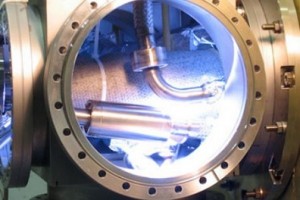<[wp_campaign_1]>
Some 309 antihydrogen atoms have been created by ALPHA Collaboration in Switzerland and stored in a magnified cylinder up to about 17 minutes for the first time in the history of science.
The Geneva-based international team of scientists working in CERN announced on Tuesday that storing the antimatter atoms up to 1000 seconds (nearly 17 minutes) is a great step forward because it gives a chance to the scientists to study them much further; whereas, the 38 atoms having been captured in 2010 could be held only for a sixth of a second, the state-run BBC reported.
Prof Jeffrey Hangst, ALPHA spokesperson, says, “Anti-matter catches on because it’s real… Half the universe has gone missing.”
“This would be a modest first step towards actually understanding antimatter.”
In a televised interview, CERN director-general Rolf-Dieter Heuer said on Tuesday, “We see its reactions, so we know antimatter exists. At the moment of the Big Bang, matter and antimatter existed in equal measures. Then one part in 10 billion was created, which is us, i.e. the material world. The target of basic science is to find more knowledge about the source of the universe.
“Antimatter was discovered 80 years ago, and you see it used now in some medical device called PET in hospitals to diagnose cancer, for example. But we don’t know exactly what this new scientific advancement can lead us to in the future.”
A January 2011 research by the American Astronomical Society has discovered antimatter originating above thunderstorm clouds. This is the first time antimatter has been observed occurring naturally on Earth.
Antiparticles are also produced in any environment with a sufficiently high temperature.
Scientists claim antimatter is the costliest material to make. In 2006, Gerald Smith estimated USD-250 million could produce 10 milligrams of positrons (equivalent to USD-25 billion per gram). This is because production is difficult.
Several NASA Institute for Advanced Concepts-funded studies are exploring whether it might be possible to use magnetic scoops to collect the antimatter that occurs naturally in the Van Allen belt of the Earth, and ultimately, the belts of gas giants like Jupiter, hopefully at a lower cost per gram.
The scarcity of antimatter means it is not readily available to be used as fuel, although it could be used in antimatter catalyzed nuclear pulse propulsion for space applications.
The reaction of 1 kg of antimatter with 1 kg of matter would produce 1.8×1017 J of energy (by the mass-energy equivalence formula E = mc²), or the rough equivalent of 43 megatons of TNT. This is slightly less than the Tsar Bomb, the largest nuclear weapon ever detonated.
Due to high energy inherent in antimatter, it may have military applications either as an explosive or in boosting of nuclear fusion weapons.
Heuer says, “It’s a very important breakthrough because it is the first step toward understanding why we are here.”
[wp_campaign_1]



